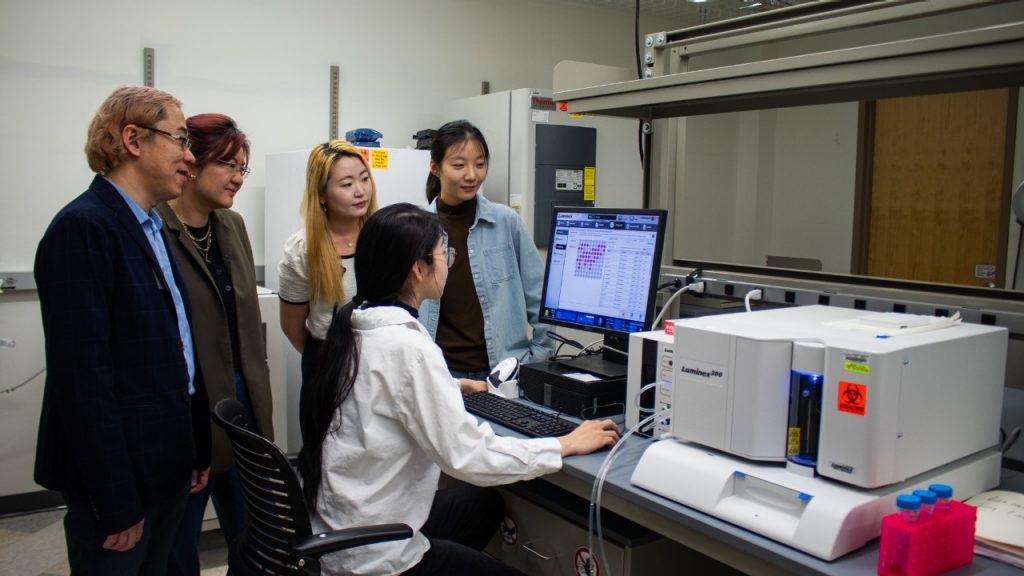The demon of our time is cancer. The American Cancer Society reports that over 600,000 Americans lost their lives to cancer in only the previous year. Medical progress has been moulded by the unwavering quest to comprehend this complicated disease, leading to the development of less intrusive yet very successful therapeutic approaches.
The use of immunotherapy as a potential remedy is growing. Using immunotherapy, one may use the body’s immune system to combat cancerous cells. A method has been discovered by researchers to transform a therapeutic approach into an innovative practice.
Together with Wenjun “Rebecca” Cai, an associate professor of materials science and engineering, Rong Tong, an associate professor of chemical engineering, is investigating a cancer immunotherapy treatment that has long piqued the curiosity of experts. Tong and Cai described their strategy in full in a recently published paper in the journal Science Advances. It entails altering the body’s immune cells to target and eliminate cancer cells. The protein cytokine is often used in this medicinal approach. The body’s immune cells release cytokines, which are tiny protein molecules that function as intercellular biochemical messengers and help synchronise the immunological response.
Cytokines are potent and highly effective at stimulating the immune cells to eliminate cancer cells.
The problem is they’re so potent that if they roam freely throughout the body, they’ll activate every immune cell they encounter, which can cause an overactive immune response and potentially fatal side effects.
Rong Tong, associate professor in chemical engineering
Tong and Cai have devised a novel method for using cytokine proteins as a possible immunotherapy treatment in conjunction with graduate students in chemical engineering, materials science, and engineering. Their approach, in contrast to earlier ones, guarantees that the immune cell-stimulating cytokines efficiently localise within the tumours for weeks while maintaining the cytokine’s responsiveness and structural integrity.
Scientists determined a while ago that cytokines can be used to activate and fight against tumors, but they didn’t know how to localize them inside the tumor while not exposing toxicity to the rest of the body,
Chemical engineers can look at this from an engineering approach and use their knowledge to help refine and elevate the effectiveness of the cytokines so they can work inside the body effectively.
Rong Tong
The objective of the research team is to strike a balance between eliminating cancer cells from the body and protecting healthy cells. Tong and his pupils used their knowledge to develop unique particles with distinguishable sizes that aid in locating the drug’s destination to achieve this aim. Once injected into the body, these microparticles are intended to remain within the tumour environment. Cai and her pupils measured the surface characteristics of these particles.
In the field of materials science and engineering, we study the surface chemistry and mechanical behavior of materials, such as the specialized particle created for this project,
Surface engineering and characterization, along with particle size, play important roles in controlled drug delivery, ensuring prolonged drug presence and sustained therapeutic effectiveness.
Wenjun (Rebecca) Cai
Tong and his students in chemical engineering came up with a creative way to guarantee effective medication delivery that involves:
- Anchors cytokines to these new microparticles, limiting the harm of cytokines to healthy cells.
- Allows the newly particle-anchored cytokines to jump-start immune systems and recruit immune cells to attack cancer cells.
Our strategy not only minimizes cytokine-induced harm to healthy cells, but also prolongs cytokine retention within the tumor,
This helps facilitate the recruitment of immune cells for targeted tumor attack.
Rong Tong
The last phase of the procedure is combining the novel, targeted cytokine treatment approach with commercially accessible, FDA-approved checkpoint blockade antibodies. This reconstitutes the previously silenced tumour immune cells, enabling them to combat the cancerous cells.
When there is a tumor inside the body, the body’s immune cells are being deactivated by the cancer cells,
The FDA-approved checkpoint blocking antibody helps “take off the brakes” that tumors put on immune cells, while the cytokine molecules “step on the gas” to jump-start the immune system and get an immune cell army to fight cancer cells. These two approaches work together to activate immune cells.
Rong Tong
The FDA-approved checkpoint-blocking antibody helps “take off the brakes” that tumours put on immune cells, while the cytokine molecules “step on the gas” to jump-start the immune system and get an immune cell army to fight cancer cells. These two approaches work together to activate immune cells.
In their investigation, the combination of the particle-anchored cytokine and checkpoint antibodies was effective in eliminating a large number of tumours.
The members of the team hope that their influence on immunotherapy treatment is part of a larger trend towards cancer treatment methods that do not harm healthy cells. The team believes that different kinds of immunostimulatory medications may be delivered in the future using the novel strategy of affixing cytokines to particles.
Researchers are still looking for safer and more effective cancer treatments,
This motivation is what drives us to develop new technologies in the field. The whole class of drugs that are employed to jump-start the immune system to fight cancer cells has largely not yet succeeded. Our goal is to create novel solutions that allow researchers to test these drugs with existing FDA-approved therapeutics, ensuring both safety and enhanced efficacy.
Rong Tong
Also Read| Diagnosis of prostate cancer made advanced by microscopy plus deep learning
I view this project as a perfect marriage between chemical engineering and materials science,
The former focuses on the synthesis and drug delivery part, the latter on applying advanced materials characterization. This collaboration not only accelerates immunotherapy research, but also has the ability to transform cancer treatment.
Wenjun (Rebecca) Cai
Source: Virginia Tech News
Journal Reference: Niu, Liqian, et al. “Noncovalently Particle-anchored Cytokines with Prolonged Tumor Retention Safely Elicit Potent Antitumor Immunity.” Science Advances, 2024, https://doi.org/adk7695.
Last Update:






